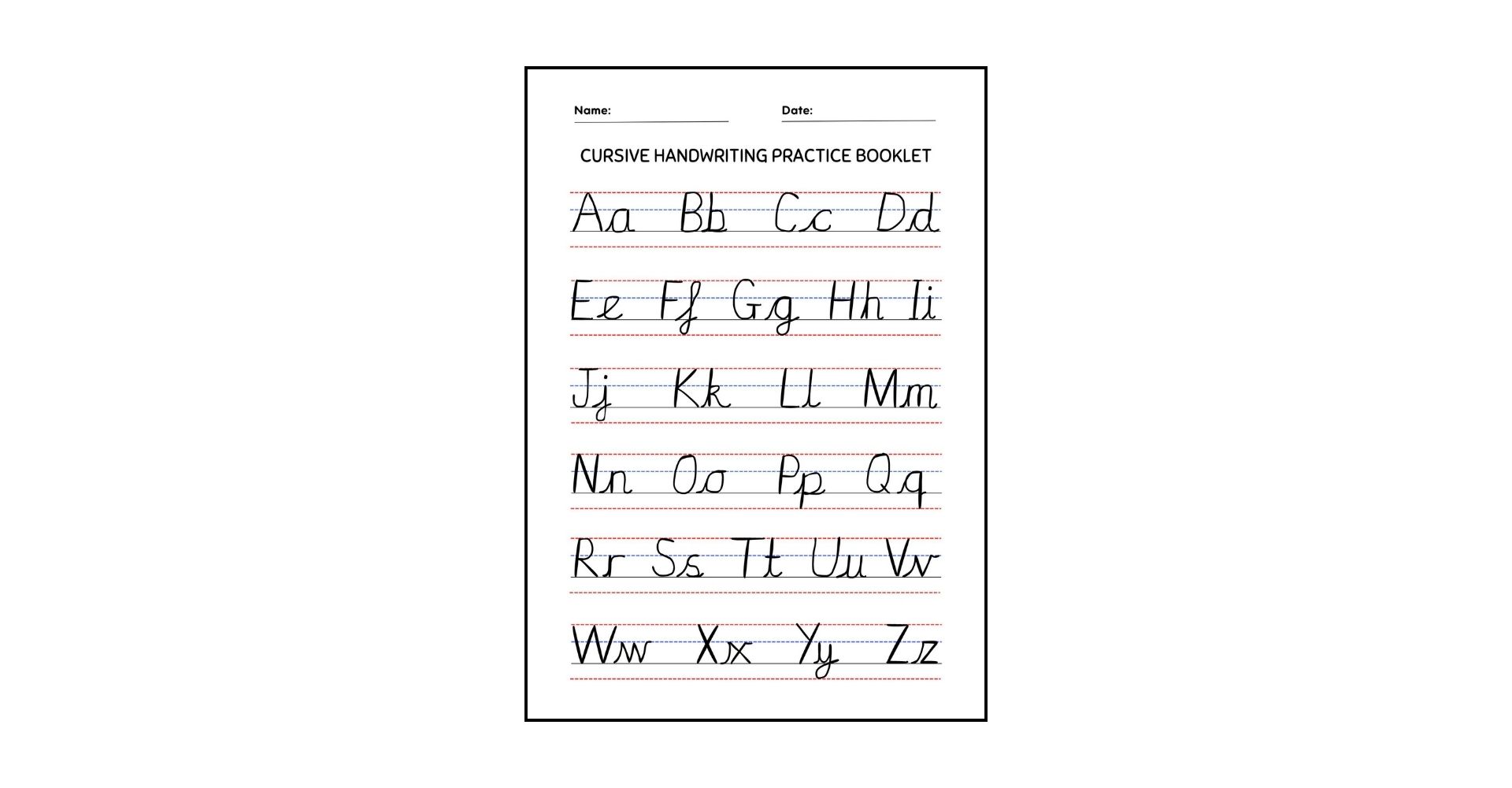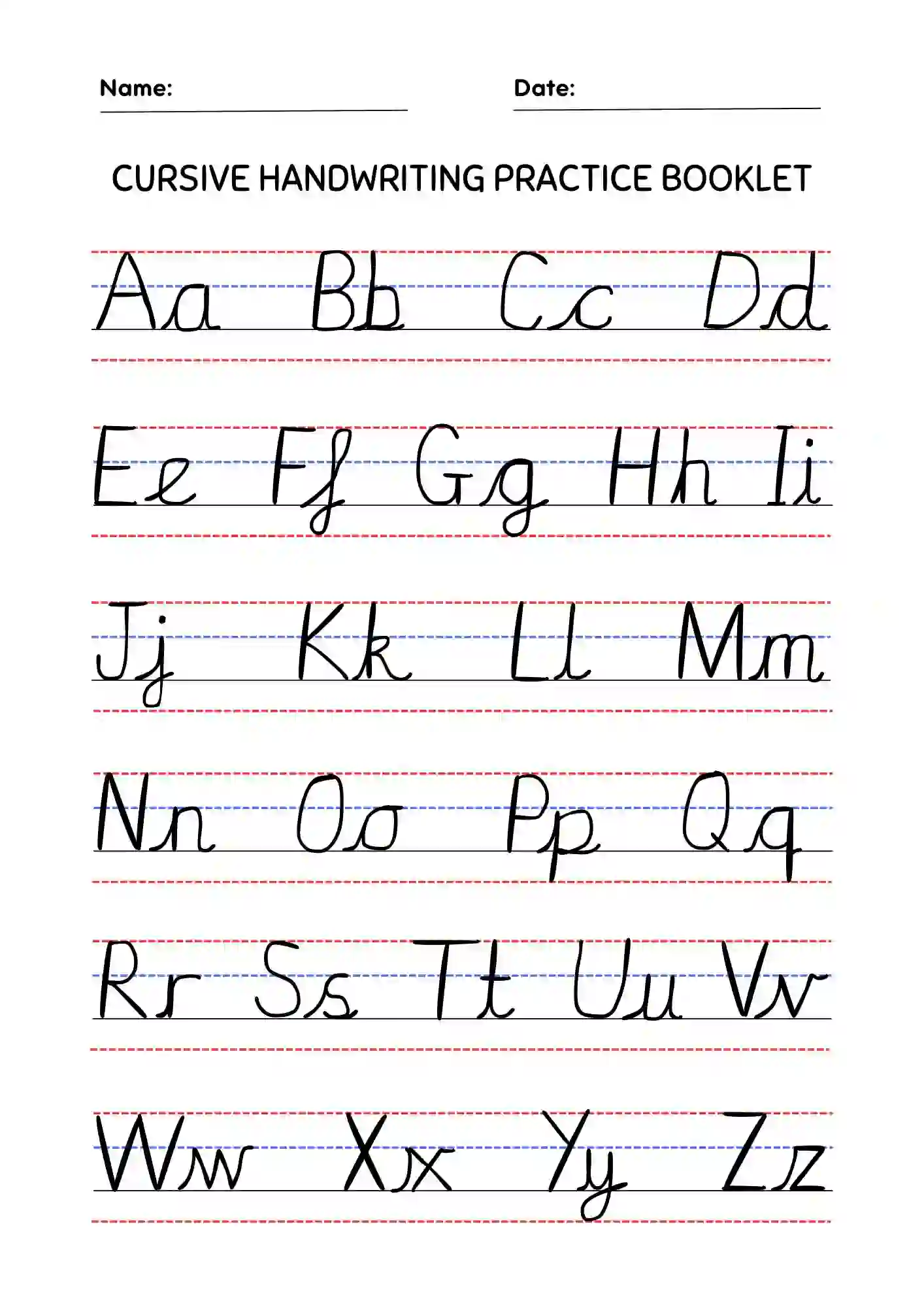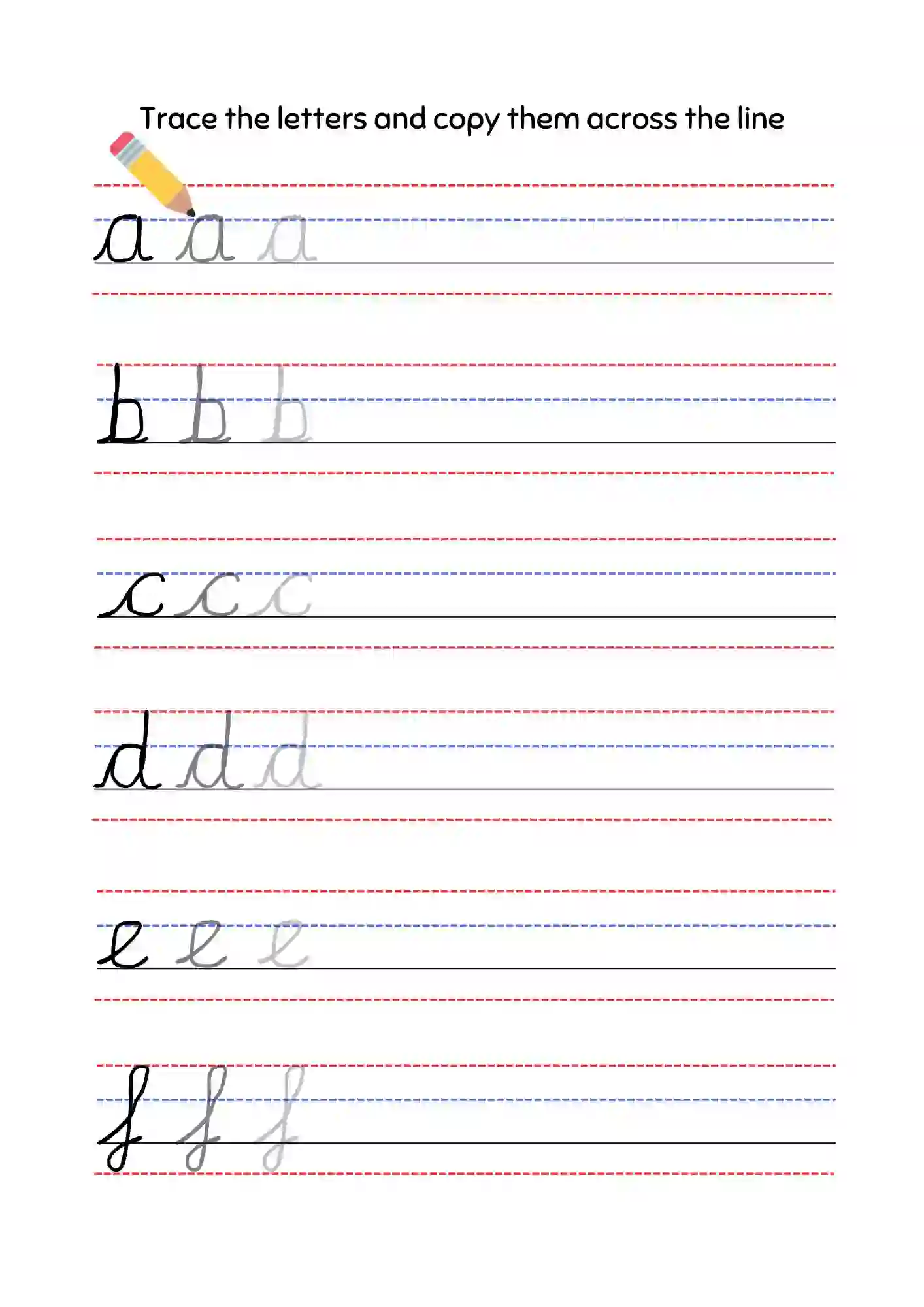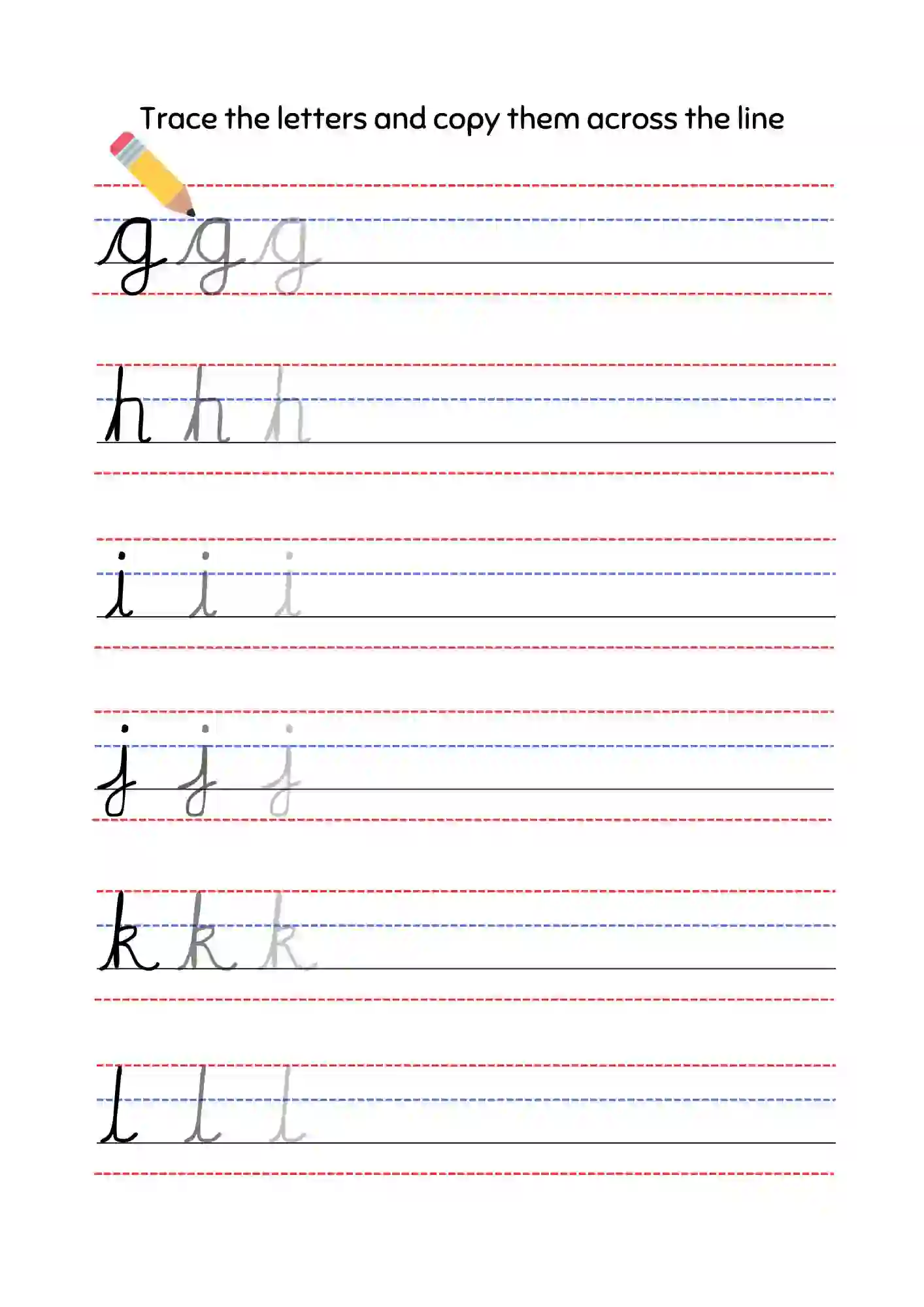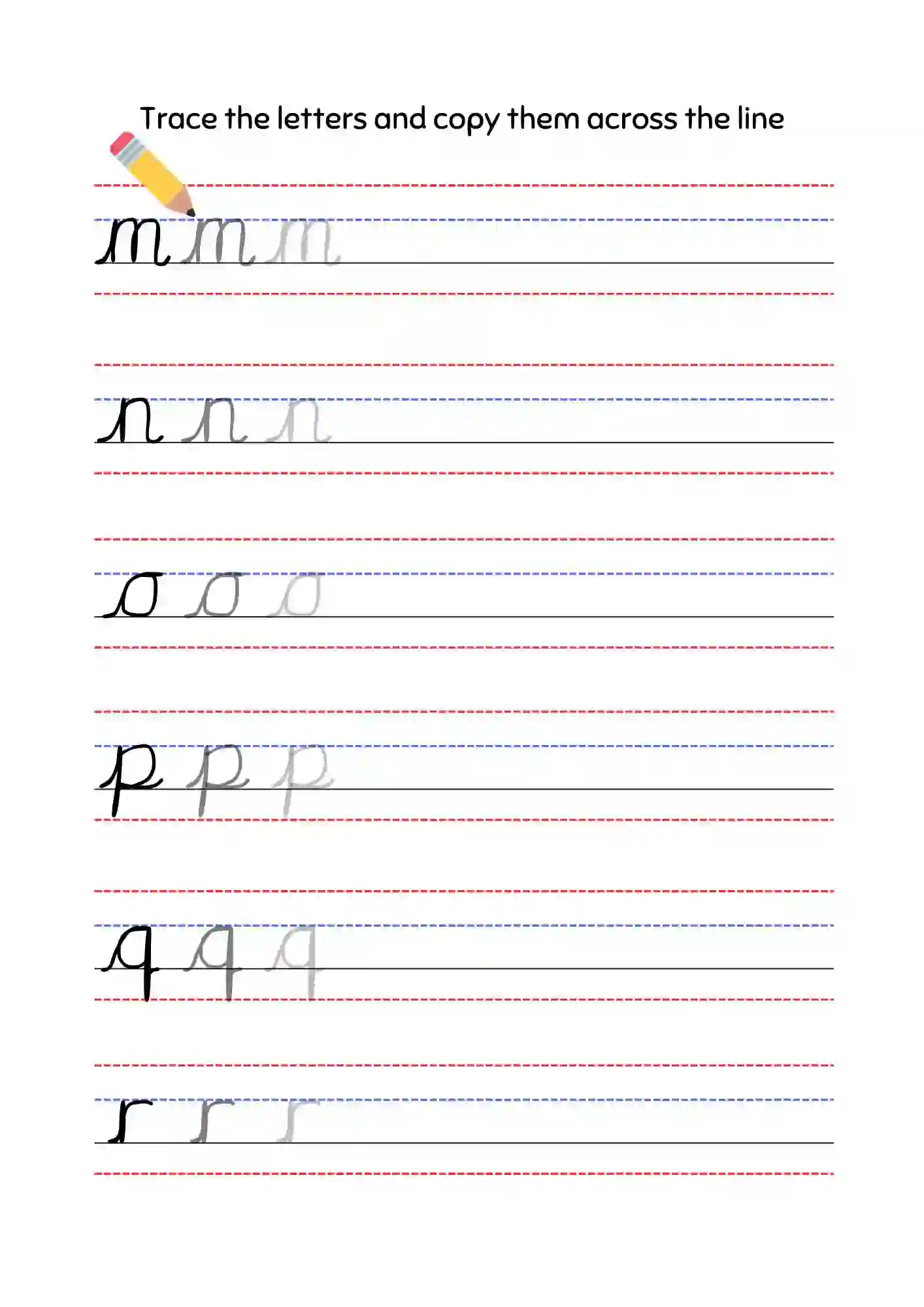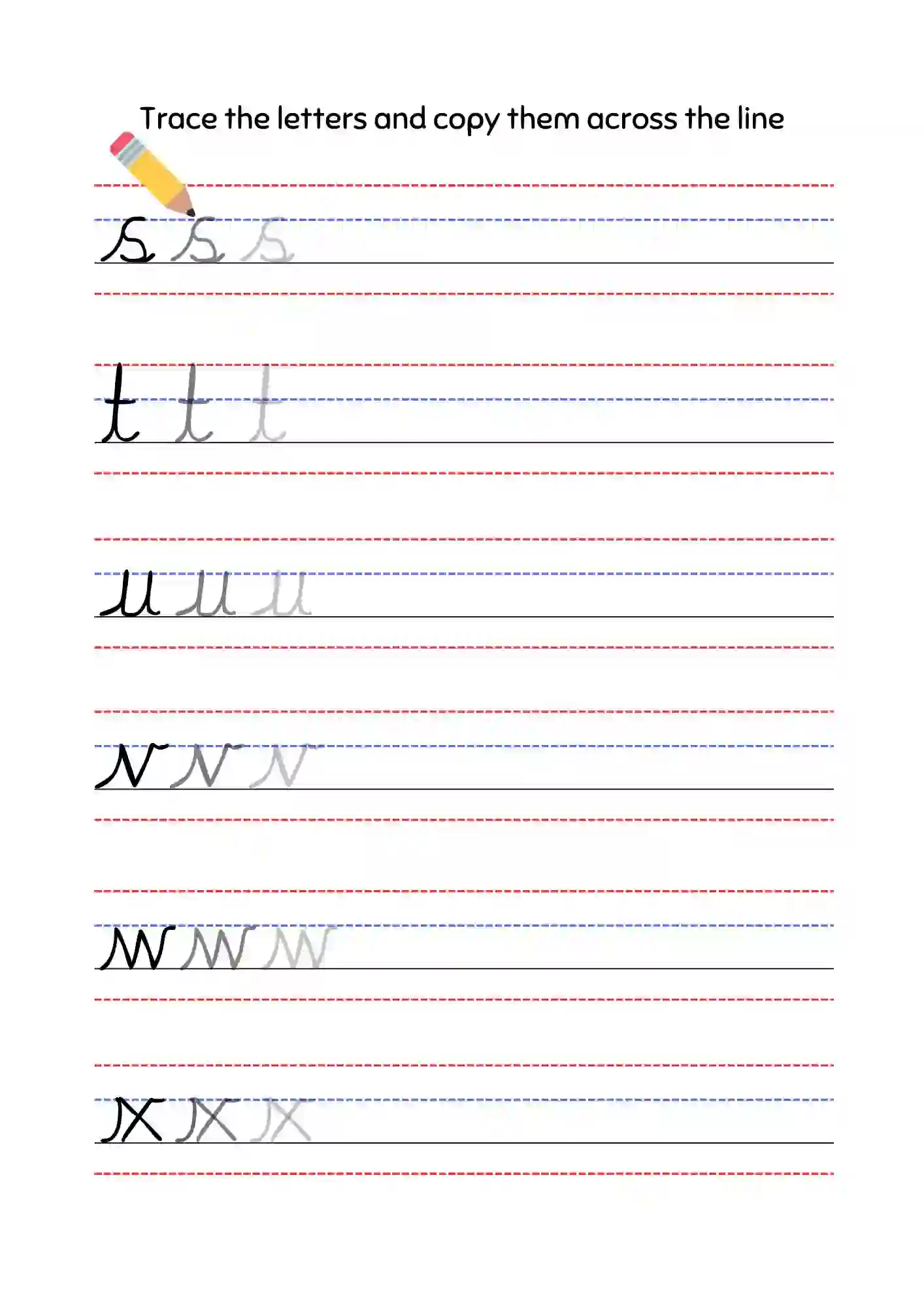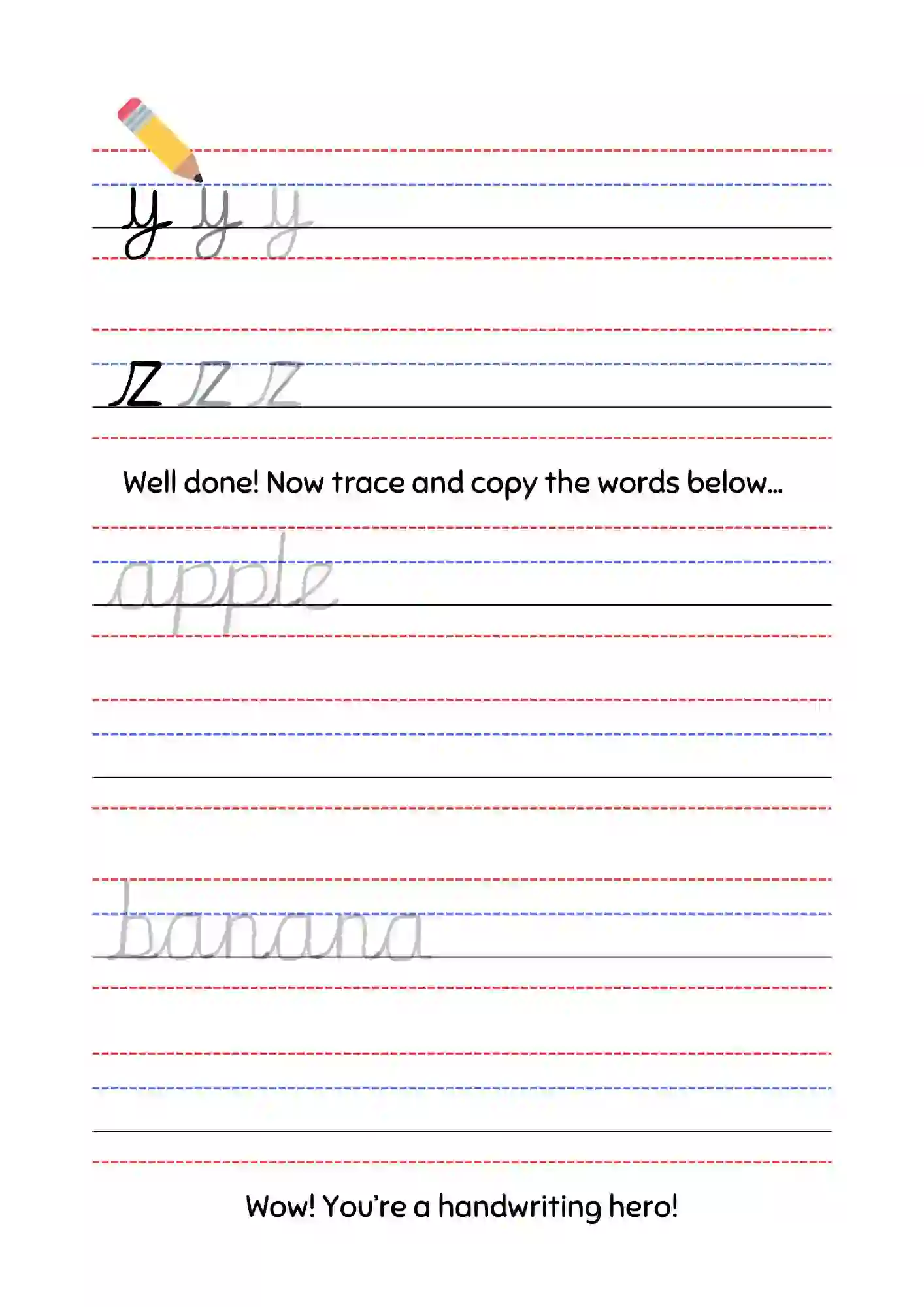Download Our Small Letters Cursive Writing Worksheets! We’ve put a lot of effort into making these, all to help little ones get the learn writing in cursive.
Small Letters Cursive Writing Worksheets Details:
| Feature | Details |
|---|---|
| Format | Downloadable PDF |
| Number of Pages | 6 |
| Content | Small Letters Cursive Writing Worksheets / Small Alphabet Cursive Writing Worksheets |
| Illustrations | Yes, playful and age-appropriate |
| Suitable For | Nursery, Lkg & Ukg |
| Printable? | Yes |
Learning Objectives:
- Learning: These Worksheets will guide them through the correct way to form lowercase cursive letters by tracing them step by step.
- Improve Their Hand Skills: By practicing the loops and lines of cursive writing, they’ll sharpen their skills and coordination.
- Getting Familiar: Connect the dots between cursive letters and their sounds. As they get familiar with each letter’s shape, they’ll also strengthen their ability to recognize them in words.
- Understand Spacing: As they practice writing cursive, they’ll learn how to leave enough space between each letter to make their words and sentences look neat and easy to read.
Who is this for?: These Worksheets are suitable for the children in LKG, UKG, nursery, preschool, and kindergarten, providing adaptable activities suitable for learning.
Materials Needed:
- Printed Copies of Worksheets: Download and print the Small Letters Cursive Writing Worksheets PDF.
- Writing Utensils: Equip children with pencils or markers suitable for tracing and writing.
How to Use:
- Introduction to Cursive: Start by showing kids what cursive writing is all about. It’s basically writing where all the letters are connected and has that smooth, flowing look.
- Follow the lines: Each worksheet comes with guides to help kids trace the letters the right way. Show them how to start each letter from the right spot and which direction to go in.
- Time to fly solo: Once they have started the tracing, They can use the dotted lines as a guide and practice writing each letter by themselves. Don’t forget to check in and give them tips along the way!
- Build some words: Now that they’re getting comfortable with cursive, why not throw in some simple words or short sentences? It’s a cool way to see how their new skills can be used in real life, like writing their name or leaving a little note for someone.
Tips:
- Using Pictures: Show pictures or charts of letters written in fancy handwriting or printed in different styles. This helps kids learn better when they see things.
- Bring Stuff: Let kids get their hands dirty! Have them trace letters in sand or make them out of clay. This is great for kids who like to move and touch things while they learn.
- Mixing It Up: For example, say rhymes while tracing letters, or listen to music while writing. This way, you’re hitting the ears, the eyes, and the hands all at once, which can help lots of different kids learn better.
Additional Activities:
- Cursive Letter Puzzles: Play puzzles with cursive letters! Cut them out from magazines or print them from worksheets. Then, ask the kids to put the letters in order from A to Z or to spell out different words.
- Cursive Writing Journals: Tell Kids to write some sentences or short stories in cursive. Prepare a book for them if require.
Download the PDF File Here:
Click To Download The Small Letters Cursive Writing Worksheets PDF
How to Print:
- Get the PDF: Start by clicking the link to download the PDF files of the worksheets.
- Set up Printing: Make sure your printer is all setup. You can adjust the settings like paper size, whether it’s portrait or landscape, and how clear you want the print to be.
- Check Before You Print: Take a print preview. To make sure everything looks just right before you hit print.
- Print: Once you’re happy with how it looks, go ahead and hit that print button.
Tips for Parents and Educators:
- Show Them How It’s Done: Let your child watch you write in cursive and then have them try to copy your moves. Give them praise when they get it right and guide them with words.
- Practice Makes Perfect: Make cursive writing a part of their daily routine. Set aside some time every day just for practicing handwriting. Doing it regularly is important for getting better and remembering how to do it.
- Being Patient and Cheering Them On: Create a positive atmosphere where kids feel okay to mess up and keep trying. Focus on the effort they put in and celebrate the progress they make, rather than just looking at the end result.
- Help Them Personally: Pay attention to each child’s strengths and weaknesses when it comes to cursive. Give them advice and support.
Common Mistakes and Solutions:
- Getting Letters Mixed Up: kids can or will mix up their letters when they’re writing. We can help them by showing them the right way to write each letter and which direction to go in. Check them to make sure they know where to start and which way to go with each letter.
- Not Keeping the Letters the Same Size: The size of the letters may not be same every time. We can help by giving them lined paper to write on or by showing them examples of how big each letter should be. Show them how to space the letters out evenly too.
- Finding it Hard to Connect the Letters: When kids struggle to join their letters together, we’ll break it down into smaller steps. We’ll start with simple combinations of letters and work up to more complicated ones. Ensure to practice a lot together to help them get it right and feel more confident.
Love from LkgWorksheets!
